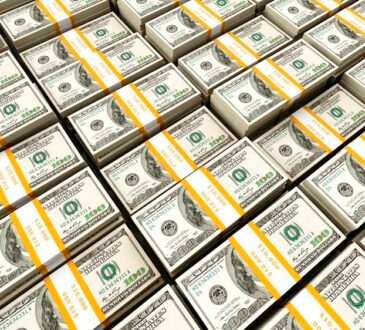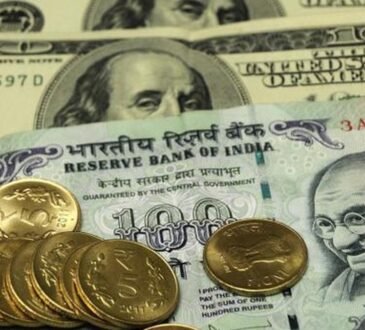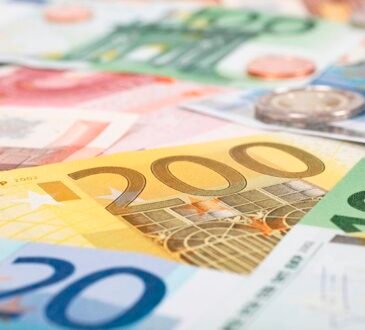- US Dollar consolidates near multi-month highs as the market braces for key US economic releases.
- Hopes of gradual Fed easing and speculation of a Trump win are buoying the USD.
- The US Dollar is on track to its best monthly performance in the last two years.
The US Dollar (USD), as measured by the US Dollar index DXY, opens the week with moderate losses as investors brace for an eventful week. The third quarter’s US Gross Domestic Product (GDP), the Personal Consumption Expenditures (PCE) Price Index, and the Nonfarm Payrolls (NFP) report are all out in the coming days.
The broader trend, however, remains positive as investors dial back hopes of aggressive interest rate cuts by the Federal Reserve (Fed). A raft of strong US economic data and speculation of former US President Donald Trump winning the US presidential election on November 5, with his inflationary policies, are lifting US Treasury yields and dragging the US Dollar higher.
The US economy remains robust, with the Atlanta Fed’s GDPNow model tracking Q3 growth at 3.4% and the New York Fed’s Nowcast model projecting 3.0% growth for Q3 and 2.6% growth for Q4.
Daily digest market movers: The US Dollar consolidates as investors await growth and labour data
- The Greenback is trading within the previous week’s range, near three-month highs, and on track to a 4% rally in October, on its strongest monthly performance in two years.
- The solid labour figures have consolidated the idea that the US economy is outperforming the rest of the major economies, which will force the Fed to slow down its easing cycle.
- The CME FedWatch tool is pricing a 96% chance of a 25 basis point (bps) cut next week. Two weeks ago, the market was split between a 25 or a 50 bps cut in November.
- The US economy is expected to show a steady 3% yearly growth in the third quarter. In the current global context, these are solid numbers, consistent with a tight labour market and steady inflation.
DXY technical outlook: DXY corrects lower with the broader upside trend intact
The DXY index remains moving within a bullish channel with higher highs and higher lows in the 4-hour chart. The pullback from the 104.55 highs seen on Monday is considered a correction.
The 4-hour Relative Strength Index (RSI) indicator shows some bearish divergence, but there is no sign of a trend shift yet, with price action standing well above the 4-hour 50 Simple Moving Average (SMA).
Immediate support is at 103.95, where the mentioned 50 SMA meets the price, ahead of 103.40 (last week’s low). On the other side, there is an important resistance at the 104.55-104.80 range, and above here, at 105.20.
US Dollar FAQs
The US Dollar (USD) is the official currency of the United States of America, and the ‘de facto’ currency of a significant number of other countries where it is found in circulation alongside local notes. It is the most heavily traded currency in the world, accounting for over 88% of all global foreign exchange turnover, or an average of $6.6 trillion in transactions per day, according to data from 2022. Following the second world war, the USD took over from the British Pound as the world’s reserve currency. For most of its history, the US Dollar was backed by Gold, until the Bretton Woods Agreement in 1971 when the Gold Standard went away.
The most important single factor impacting on the value of the US Dollar is monetary policy, which is shaped by the Federal Reserve (Fed). The Fed has two mandates: to achieve price stability (control inflation) and foster full employment. Its primary tool to achieve these two goals is by adjusting interest rates. When prices are rising too quickly and inflation is above the Fed’s 2% target, the Fed will raise rates, which helps the USD value. When inflation falls below 2% or the Unemployment Rate is too high, the Fed may lower interest rates, which weighs on the Greenback.
In extreme situations, the Federal Reserve can also print more Dollars and enact quantitative easing (QE). QE is the process by which the Fed substantially increases the flow of credit in a stuck financial system. It is a non-standard policy measure used when credit has dried up because banks will not lend to each other (out of the fear of counterparty default). It is a last resort when simply lowering interest rates is unlikely to achieve the necessary result. It was the Fed’s weapon of choice to combat the credit crunch that occurred during the Great Financial Crisis in 2008. It involves the Fed printing more Dollars and using them to buy US government bonds predominantly from financial institutions. QE usually leads to a weaker US Dollar.
Quantitative tightening (QT) is the reverse process whereby the Federal Reserve stops buying bonds from financial institutions and does not reinvest the principal from the bonds it holds maturing in new purchases. It is usually positive for the US Dollar.





